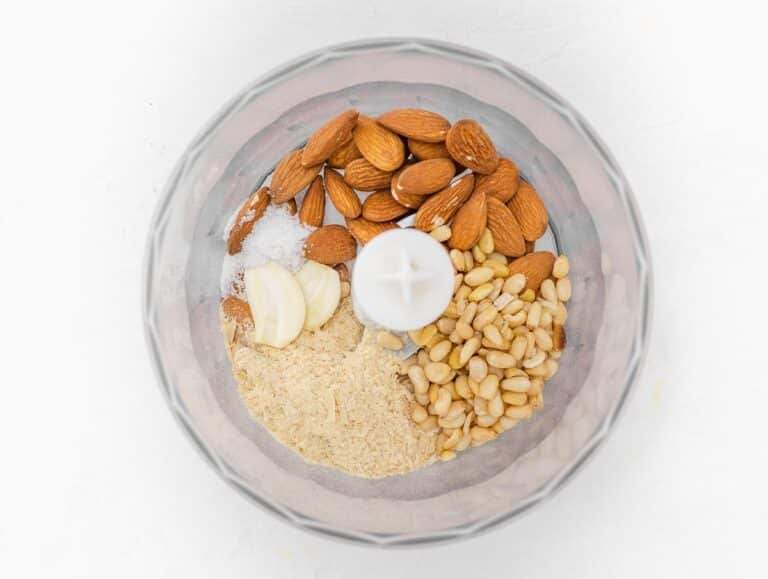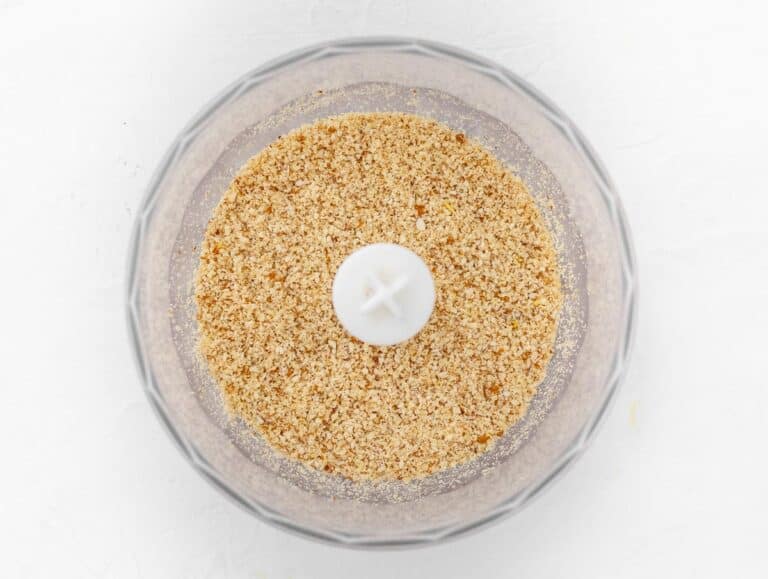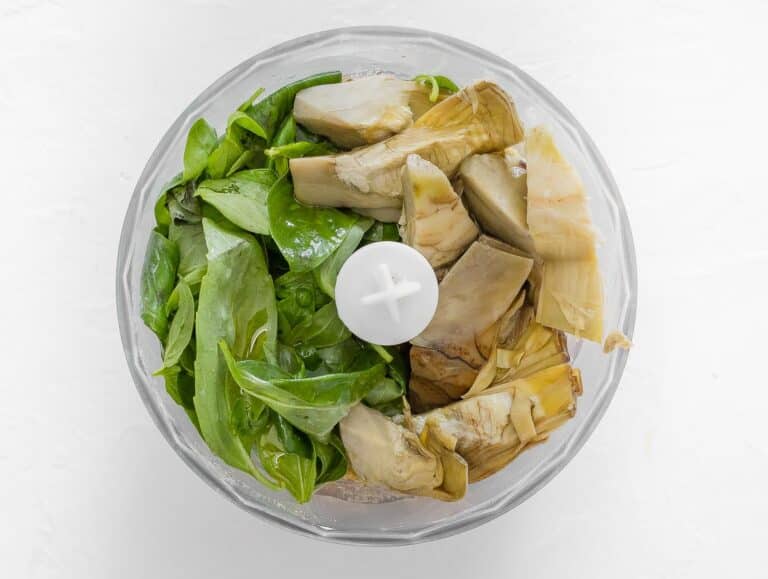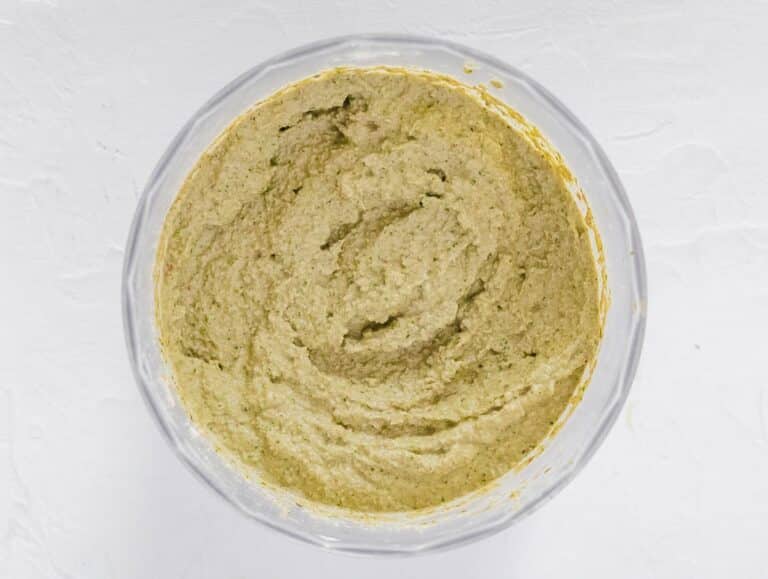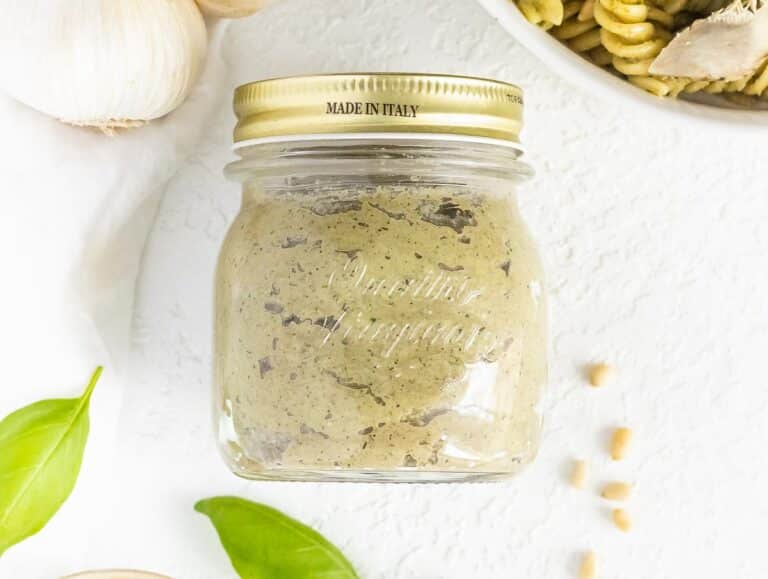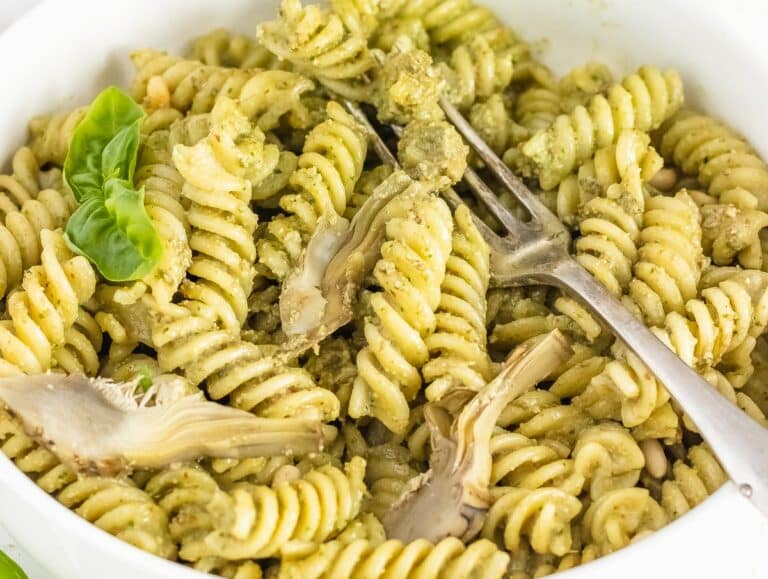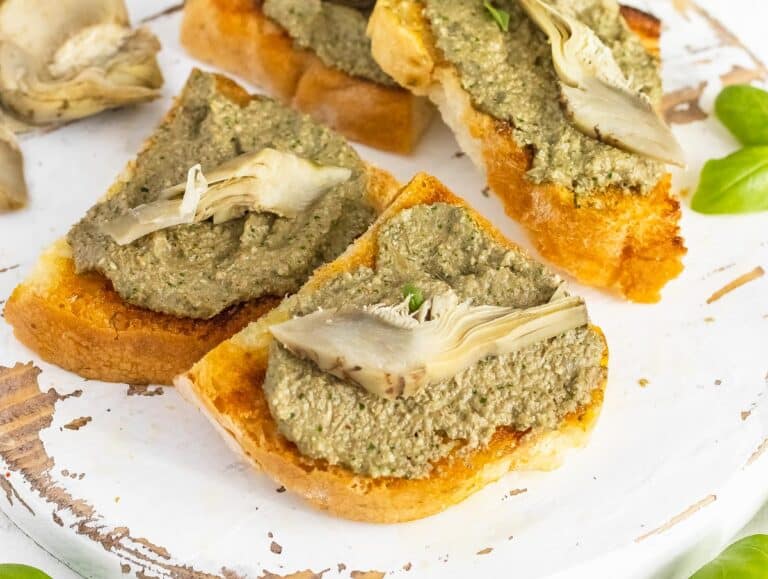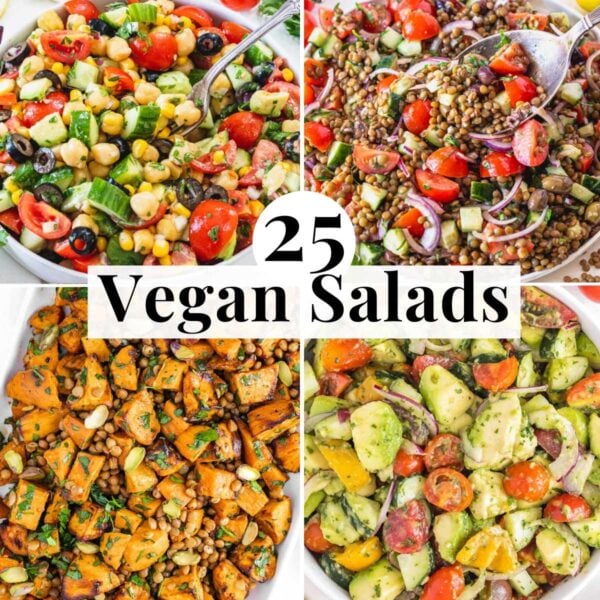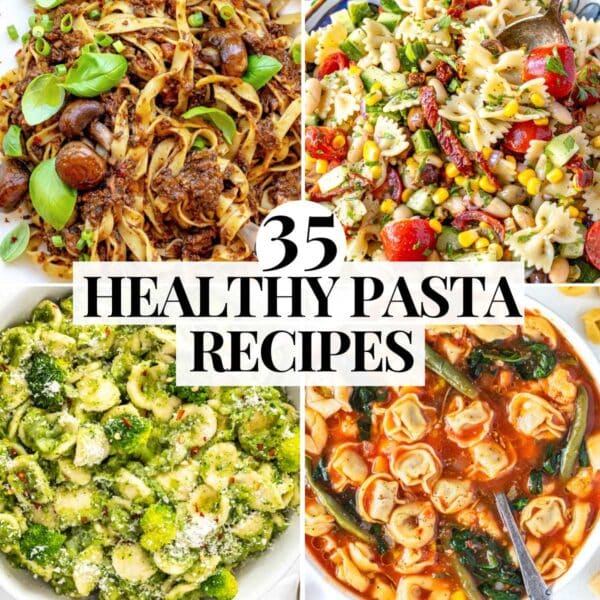Artichoke pesto is creamy, mild, earthy, and with a delicate artichoke flavor. It’s quick and easy to make with jarred artichoke hearts and fresh basil.
Enjoy artichoke pesto just like any other pesto. It’s great as a sauce with pasta, as a spread on bruschetta, or with pizza and veggies.
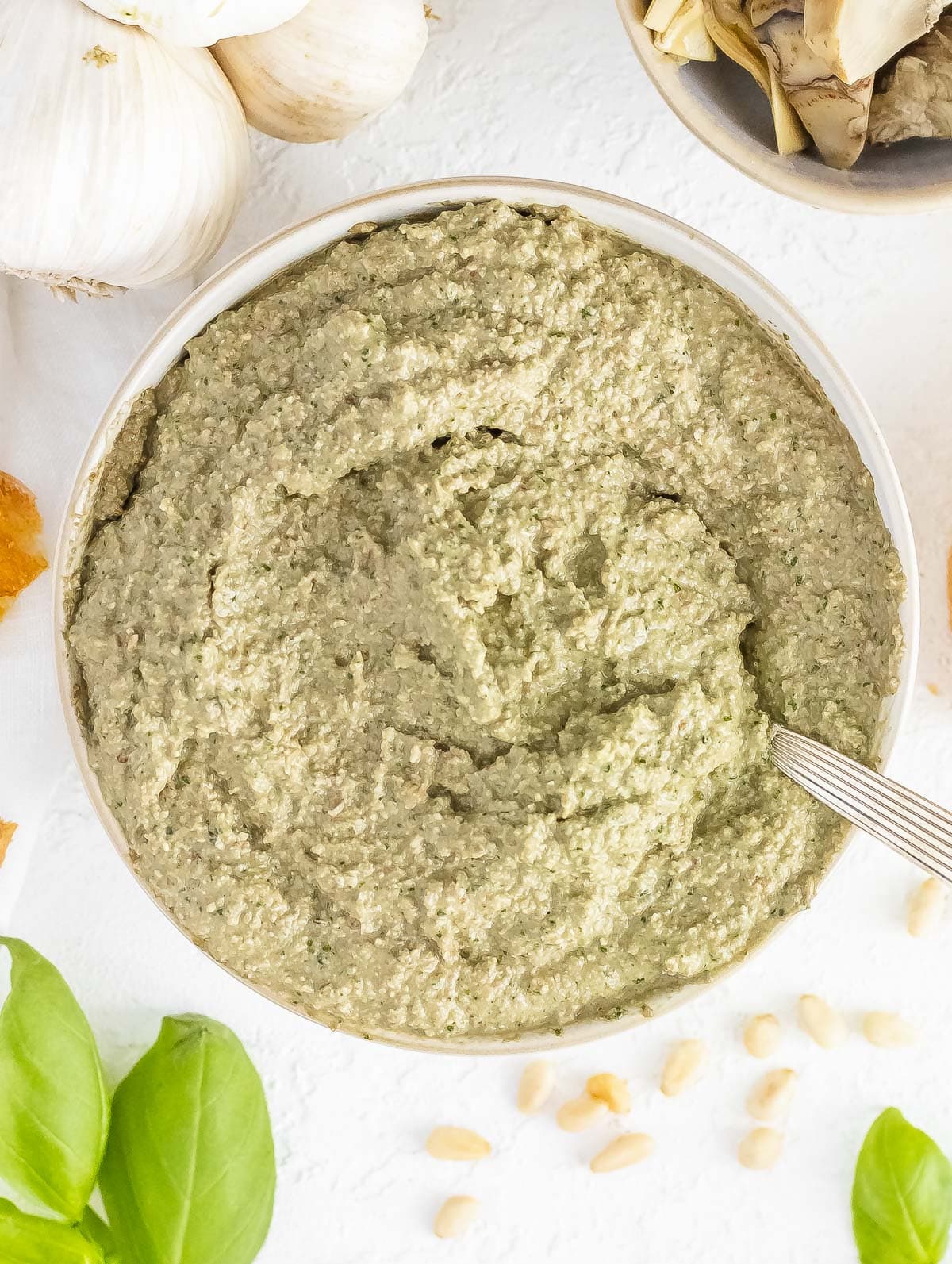
Table of Contents
To learn more on this topic, check out our guide on how to make vegan pesto + 9 pesto recipes.
Artichokes are an incredible vegetable and we love cooking them in the most varied ways, including pesto. To learn more about this wonderful vegetable, check out our guide on “how to cook with artichokes” where we share 10+ easy and delicious artichoke recipes.
Artichoke pesto is not your usual pesto and it will most definitely surprise you. Try this recipe if you are looking for something different than the more common pesto with basil (which love so much but occasionally need a break from).
This recipe is quick and easy to make in just 5 minutes in a food processor. We use jarred artichoke hearts and basil as the main ingredients.
The recipe is dairy-free and vegan so that anyone can enjoy it. Parmesan cheese is replaced with nuts and nutritional yeast.
The result is a tasty, healthy, and nutritious recipe to use as a quick meal, for instance with pasta or toasted bread, when you don’t have much time to cook.
TIP: Are you curious about artichokes? Here’s our ultimate guide on how to cook with artichokes with 10+ easy artichoke recipes.
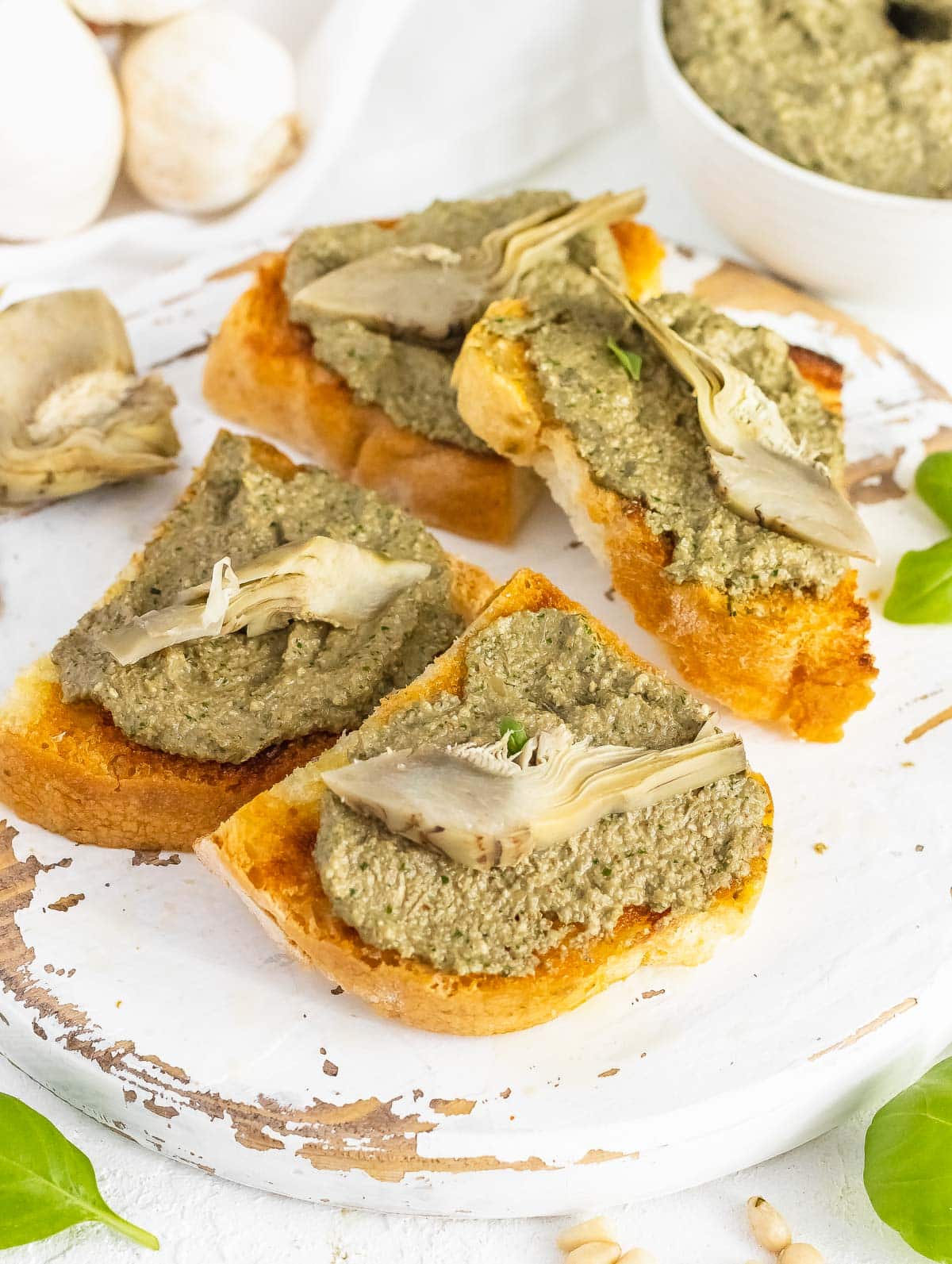
Ingredients
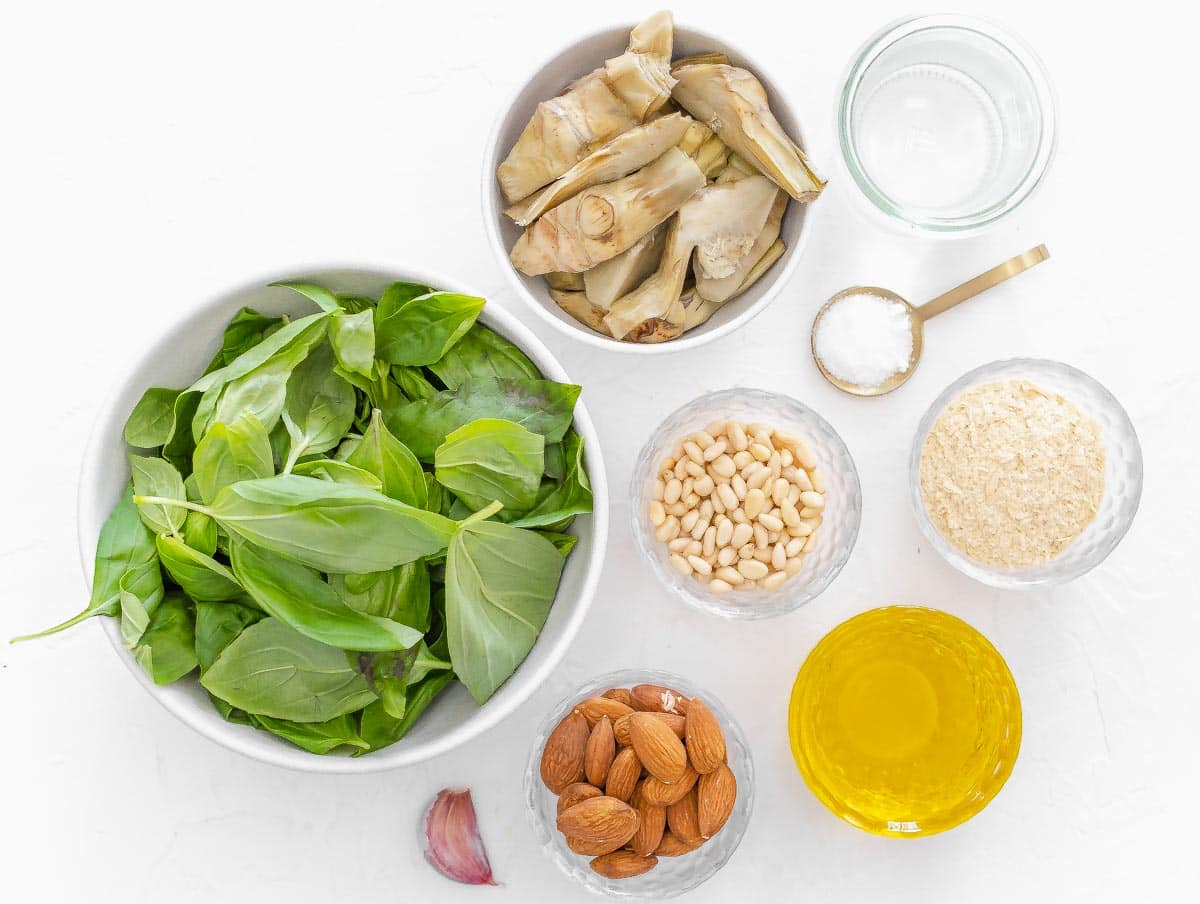
Artichokes: we use jarred artichoke hearts to make this recipe in 5 minutes. If you want to use homecooked artichokes you can do so. You can use braised artichokes, pan-fried artichokes, or steamed artichokes.
Basil: we mix artichokes with fresh basil leaves to make the pesto more aromatic. You can substitute flat-leaf parsley or mint for the basil.
Pine nuts: to add a distinctive creamy texture and nutty flavor to the pesto. If you can’t find pine nuts, use more of the other nuts.
Almonds: we use them to replace the texture of the parmesan cheese. Other nuts you can use are walnuts and macadamia. Use nuts raw, without toasting them.
Garlic: a key ingredient in pesto.
Nutritional yeast: to add a mild cheesy flavor. Combined with the almonds makes for a great parmesan cheese replacement.
Olive oil: best if extra virgin as it’s more nutritious and more flavorful.
Water: we use water to make the pesto thinner without using too much oil. Add more or less water based on how thin or thick you want your artichoke pesto to be. Ours has a medium thickness so that you can use it as a spread.
Salt: since we are not using salty parmesan cheese or pecorino cheese, we need salt to make the pesto taste good.
Lemon: we do not add lemon juice to our artichoke pesto recipe. However, before serving you can squeeze some lemon on top of the pesto or grate some lemon zest. For example, we do just that in the artichoke pesto pasta in the picture below.
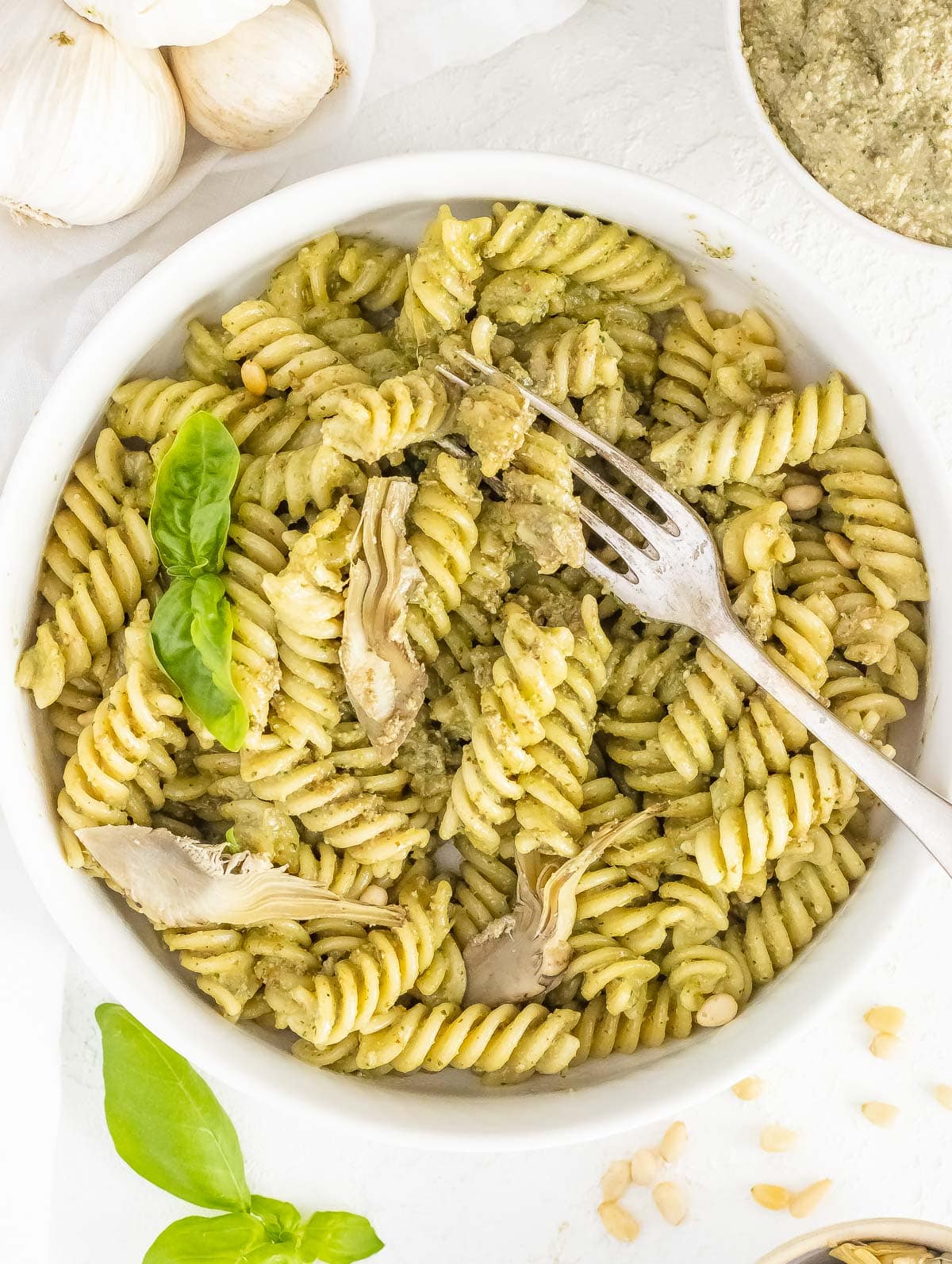
Instructions
Peel and cut the garlicinhalf lengthwise, remove its core, if any, and add the clove to the food processor.Note: the core of the garlic can be hard to digest; we remove it to have a lighter pesto.
Add almonds, pine nuts, nutritional yeast, and salt.
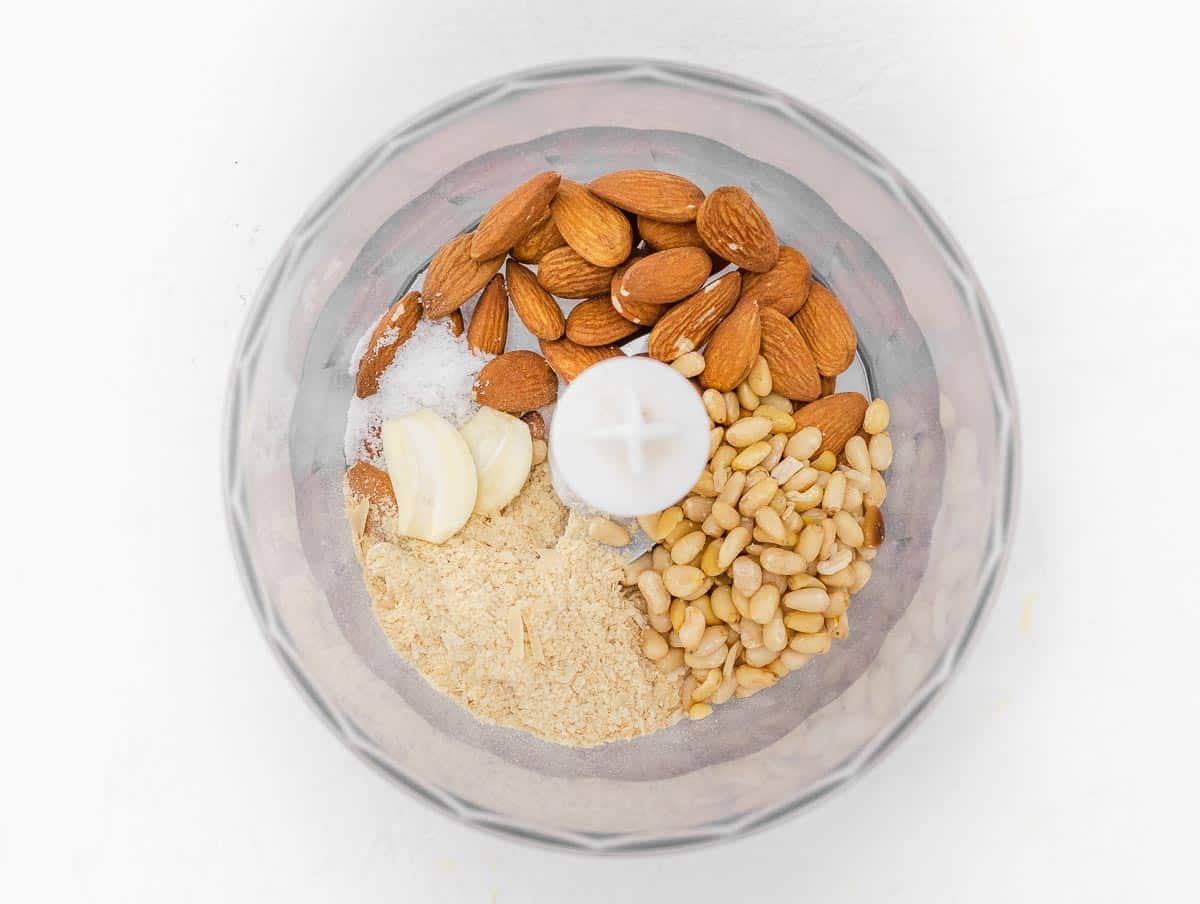
Blend until you get a finely coarse texture (1 minute).
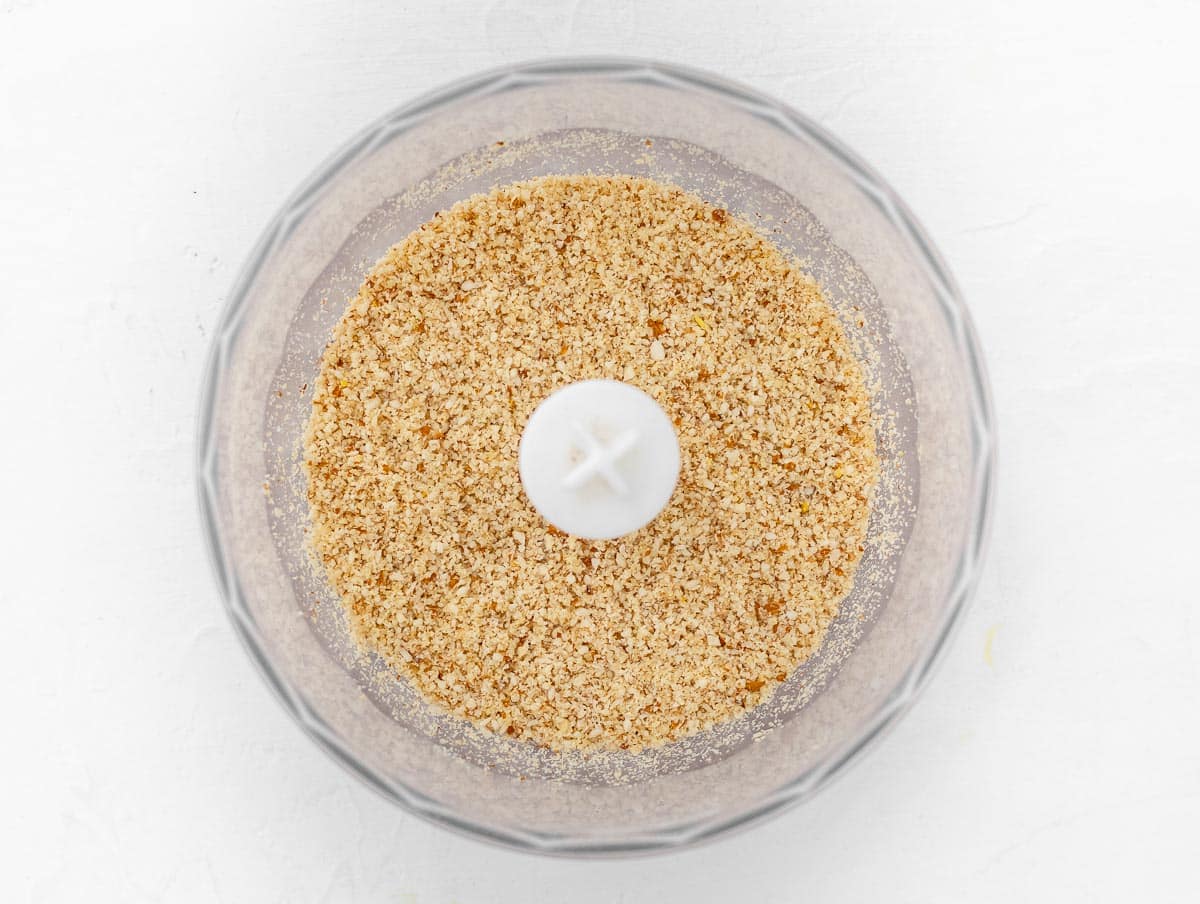
Add drained artichoke hearts, basil leaves, and olive oil.
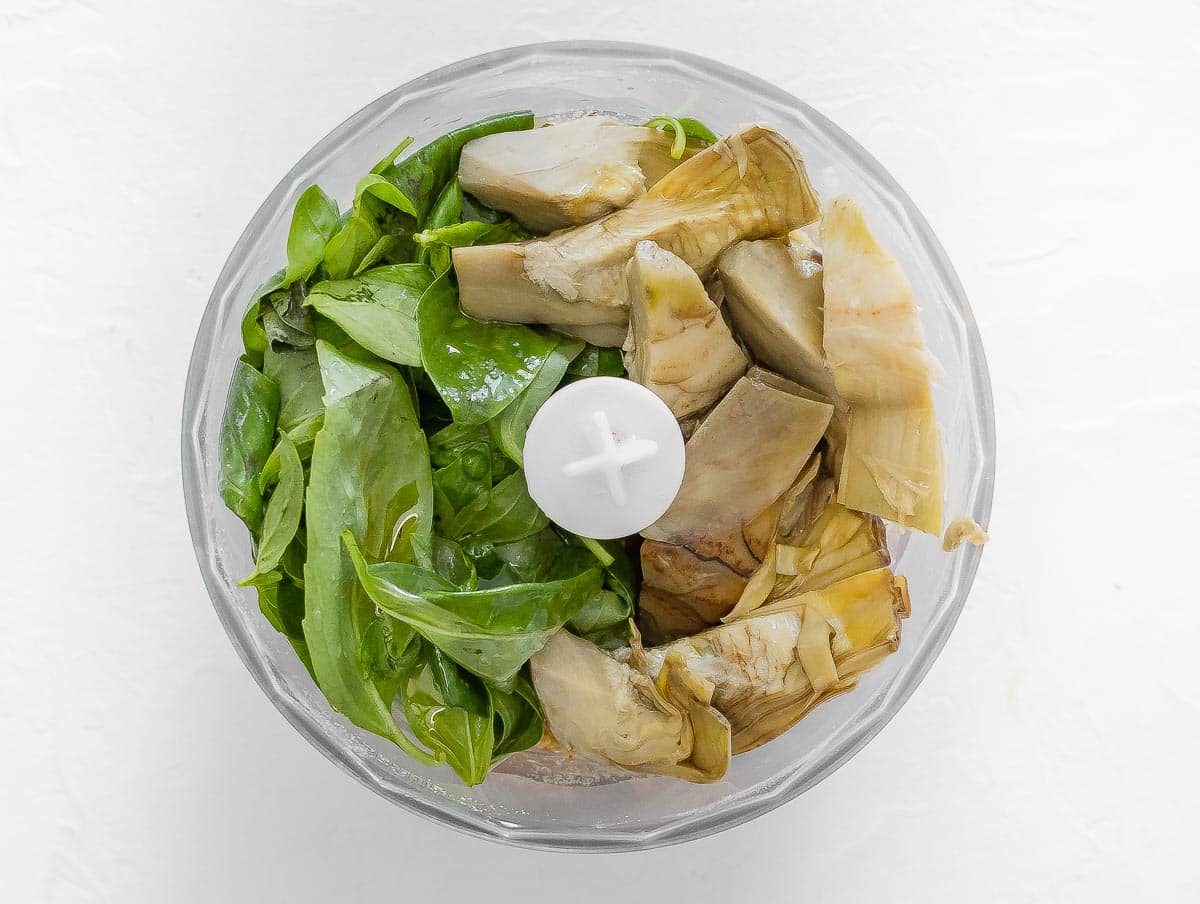
Pulse a few times until the artichokes and the basil are fully incorporated with the other ingredients. Taste and adjust for salt. If you prefer a thinner pesto, add more oil or water.
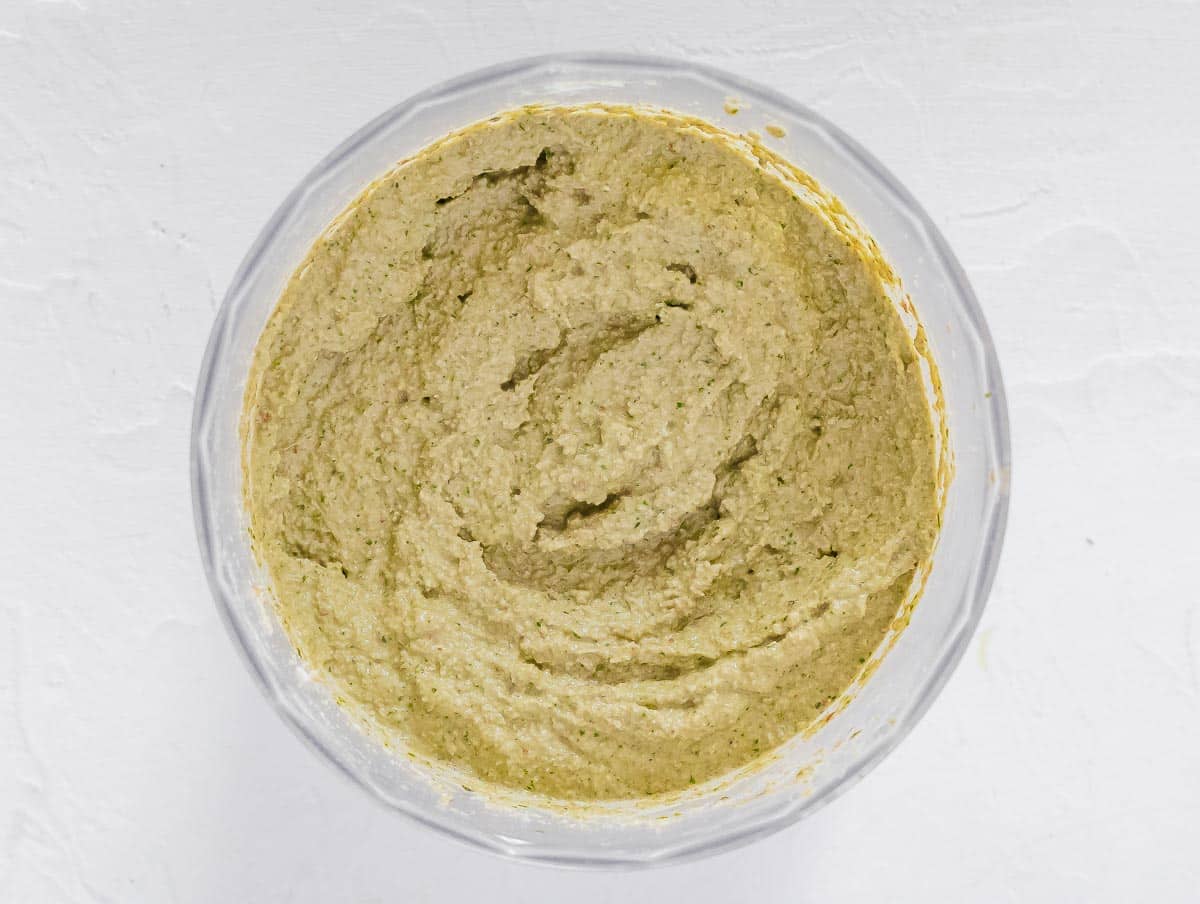
Serving suggestions
If you’re wondering what to serve with artichoke pesto, look no further. Pesto and pasta are great together, and this artichoke pesto is not different. To use it with pasta, add pesto to a bowl, add ½ cup of pasta cooking water, and stir to dilute it. Reserve some more pasta water for later.
Drain pasta, add it to the bowl with the pesto, and stir to combine. Add more reserved pasta water or more artichoke pesto if necessary. Finish with a drizzle of extra virgin olive oil and serve.
Tip: remember to salt the pasta cooking water with a generous amount of salt before cooking the pasta.
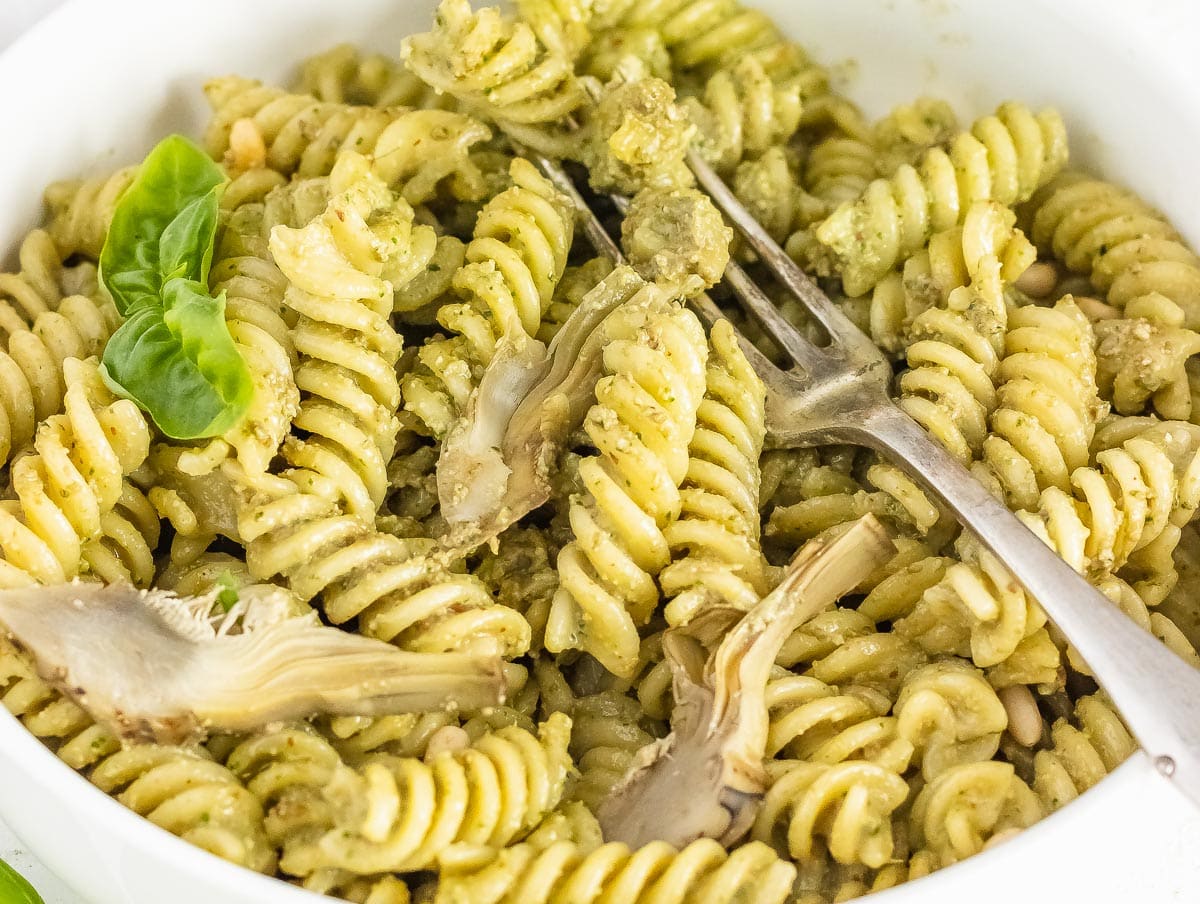
To use it on bruschetta, toast some slices of bread, like ciabatta bread with a drizzle of olive oil, spread the pesto, and add a piece of artichoke on top. Perfect as a starter or as a side dish.
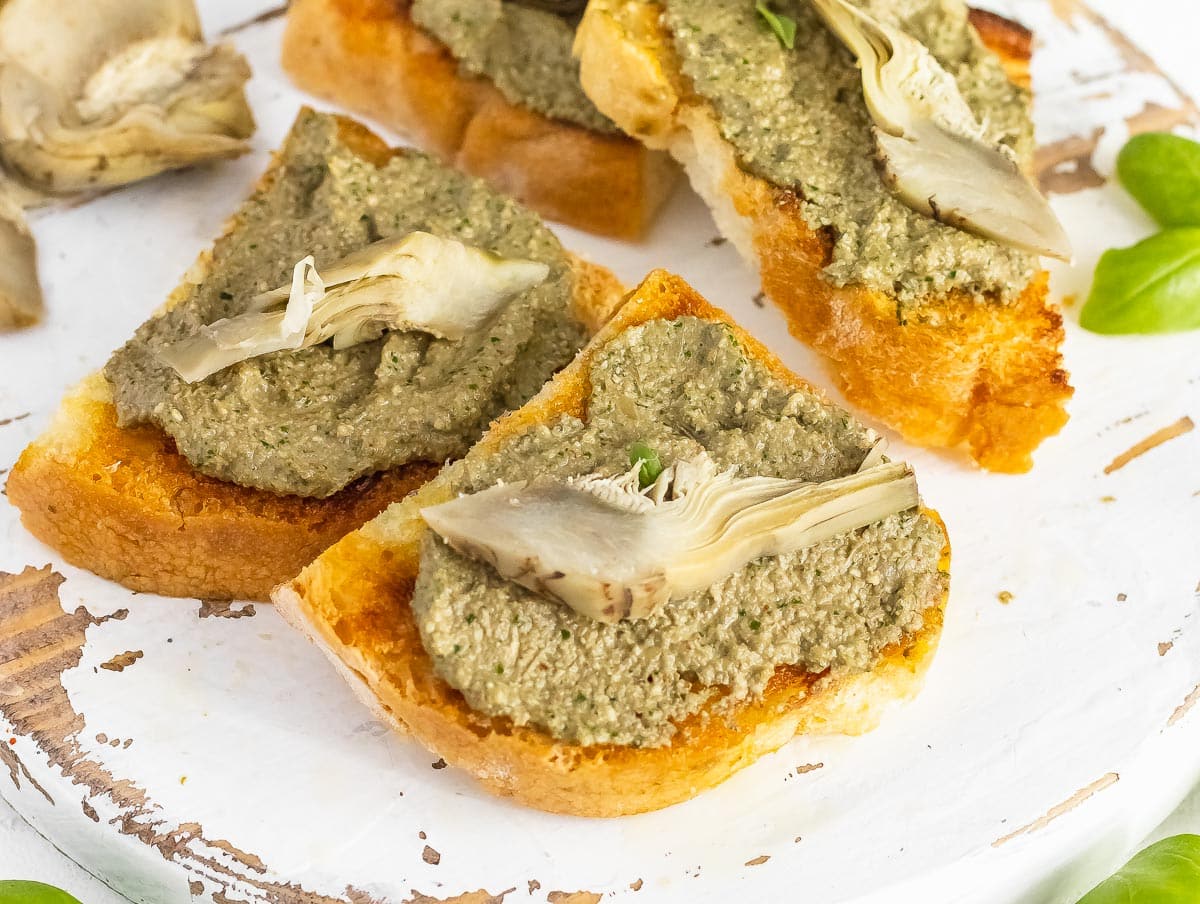
More artichoke recipes
To learn more about artichokes, check out our artichoke recipes guide where we explain in-depth how to cook with artichokes and share with you our favorite artichoke recipes. Some of those are:
- Braised Artichokes or Roman Style Artichokes.
- Steamed Artichokes – buttery, light, and healthy.
- Oven-roasted artichokes with potatoes – one of the best side dishes ever.
More pesto recipes
Pesto is an easy way to dress a chickpea pasta salad, add creaminess to a bowl of pasta, and serve as a colorful appetizer with veggie sticks. It’s also a handy way to get more veggies into your diet, so take your pick from our pesto selection:
- Arugula pesto: a healthy and deep green sauce that works well in potato salad and couscous salad
- Chestnut pesto is a luxurious pesto perfect for fall and winter. It pairs well with spaghetti and roasted mushrooms and is cozy, and scrumptious
- Sun–dried tomato pesto free from pine nuts and with healthy omega-3 fats – it’s a great dip served with focaccia or toasted bread
- Red pepper pesto is a spreadable pesto that pairs wonderfully with grilled veggies in a sandwich, one of our favorite quick lunch ideas
- Parsley pesto is perfect as a drizzle for air fried and roasted vegetables such as asparagus and artichokes
- Zucchini pesto is a fresh summer pesto. It’s a perfect condiment for BBQ night to drizzle on grilled veggies and mains
How do you eat pesto in your home? We’d love to hear from you, let us know in the comments below!
Storage
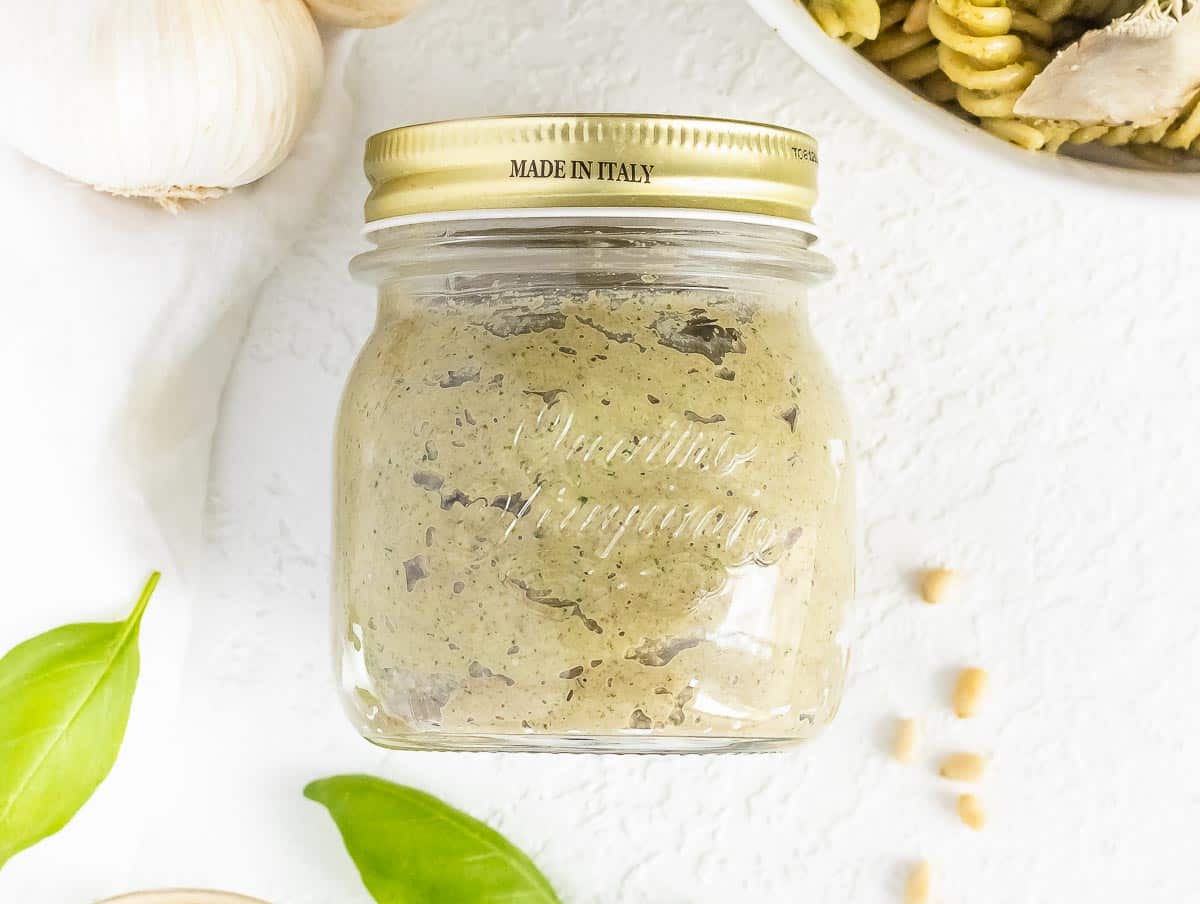
Store in the refrigerator in a bowl with a thin layer of olive oil on top to prevent it from drying out for up to 5 days.
Alternatively, transfer into a small jar or in ice tray cubes and freeze for up to 6 months.

Artichoke Pesto
Equipment
- Food processor or blender
Ingredients
- 1 small garlic clove
- ⅓ cup almonds (or walnuts)
- 2 tablespoons pine nuts
- 3 tablespoons nutritional yeast
- ½ teaspoon salt
- 1 cup artichoke hearts
- 1 packed cup basil leaves (or flat-leaf parsley)
- ¼ cup extra virgin olive oil
- ⅓ cup water (or more for a thinner consistency)
Instructions
- Peel and cut the garlic in half lengthwise, remove its core, if any, and add the clove to the food processor.Note: the core of the garlic can be hard to digest; we remove it to have a lighter pesto.
- Add almonds, pine nuts, nutritional yeast, and salt.
- Blend until you get a finely coarse texture (1 minute).
- Add drained artichoke hearts, basil leaves, and olive oil.
- Pulse a few times until the artichokes and the basil are fully incorporated with the other ingredients.Taste and adjust for salt. If you prefer a thinner pesto, add more oil or water.
- Use immediately, or store in the refrigerator in a bowl with a thin layer of olive oil on top to prevent it from drying out. Alternatively, transfer into a small jar and freeze for up to 6 months.
- To use it with pasta, add pesto to a bowl, add ½ cup of pasta cooking water, and stir to dilute it. Reserve some more pasta water for later.Drain pasta, add it to the bowl with the pesto and stir to combine. Add more reserved pasta water or more artichoke pesto if necessary. Finish with a drizzle of extra virgin olive oil and serve.Tip: remember to salt the pasta cooking water with a generous amount of salt. before cooking the pasta.
- To use it on bruschetta, toast some slices of bread, like ciabatta bread with a drizzle of olive oil, spread the pesto, and add a piece of artichoke on top. Perfect as a starter or as a side dish.
Notes
Nutrition
You might also like:


